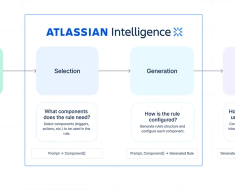Large Language Models (LLMs) are advanced AI models designed for natural language understanding and generation. They possess vast parameter sizes, are pre-trained on massive text data, and utilize attention mechanisms for capturing contextual relationships effectively. Despite their impressive capabilities, the deployment of LLMs raises ethical concerns regarding biases, misinformation, environmental impact, and challenges in interpretability and accountability.
**Fundamentals Of Large Language Models**
LLMs are artificial intelligence models designed to comprehend and produce prose that resembles human speech, using deep learning architectures such as transformers, CNNs, and RNNs. The key fundamentals of LLMs include architecture, pre-training, fine-tuning, tokenization, attention mechanism, and parameter size.
**Traditional Machine Learning Models Vs. LLMs**
Large language models have revolutionized natural language processing (NLP) tasks, outperforming traditional machine learning models. Differences between traditional models and LLMs include aspects such as training data, parameter size, pretraining, fine-tuning, long-range dependencies, contextual understanding, task specificity, performance, interpretability, deployment, and bias and fairness.
**Features Of Large Language Models**
LLMs are characterized by their enormous parameter sizes, pre-training on vast textual data, strong contextual understanding through the use of attention mechanisms, and adaptability for specific downstream tasks. However, deploying LLMs raises ethical questions about biases, potential misuse for disinformation generation, and environmental effects due to high processing requirements.
**Applications Of Large Language Models**
These advanced AI models have applications in a variety of fields, including natural language understanding, machine translation, text summarization, question answering, content production, and biomedical text mining applications.
**Ethical Implications Of Large Language Models**
The deployment of LLMs raises significant ethical concerns related to biases in training data, potential misuse for generating misinformation, environmental impact due to computational requirements, and challenges in interpretability and accountability. It will require interdisciplinary collaboration and continuous research to address these ethical implications.
**Conclusion**
LLMs are a significant breakthrough in natural language processing, with capabilities in a variety of applications such as question answering, machine translation, and text summarization. However, addressing the ethical concerns associated with their deployment is crucial.
**FAQs**
– LLMs are advanced AI models designed to understand and generate human-like text, built on deep learning architectures like transformers.
– LLMs have large parameter sizes, are pre-trained on vast text data, and utilize attention mechanisms, enabling them to outperform traditional models in natural language processing tasks.
– Ethical concerns include biases in training data, potential misuse for generating misinformation, environmental impact due to computational requirements, and challenges in interpretability and accountability.
– Mitigation involves careful data curation, safeguards against misuse, optimization of computational resources, and promoting transparency and interpretability in model development through interdisciplinary collaboration and ongoing research.
If you want to stay updated on AI news, make sure to visit [GPTNewsRoom.com](https://gptnewsroom.com) for the latest information.
via GPT News Room https://ift.tt/LFbXapy




